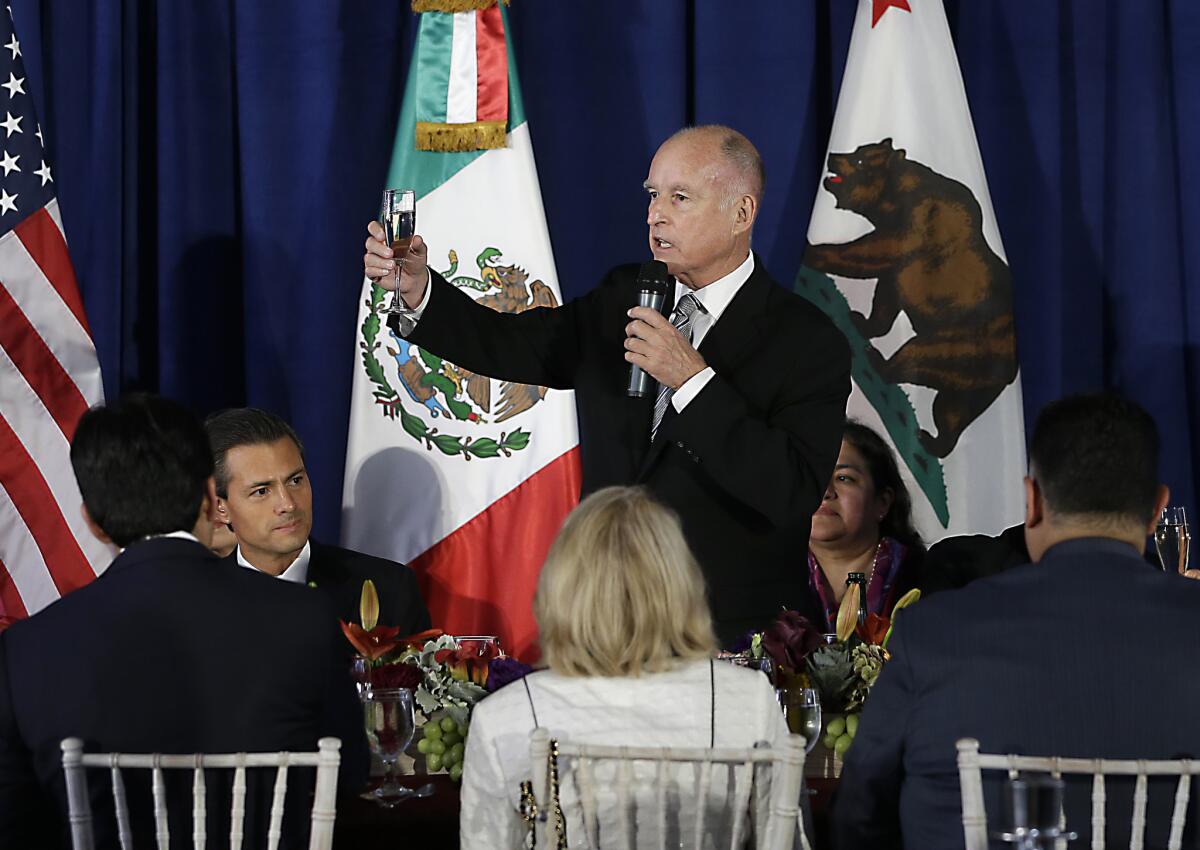Gov. Brown OKs tripling state film tax-credit funding to $330 million

- Share via
California Gov. Jerry Brown has signed off on a deal that would more than triple funding for California’s film and TV tax-credit program.
The compromise would increase funding to $330 million a year over the next five years. While that falls short of the $400 million annually sought by backers, the amount is substantially more than the $100 million that the state currently allocates.
“This law will make key improvements in our Film and Television Tax Credit Program and put thousands of Californians to work,” Brown said.
AB 1839 also would allow more projects to qualify, including new network television dramas and big-budget studio movies, and would provide additional incentives for projects that shoot in California cities other than Los Angeles.
It would also scrap a controversial lottery system used to divvy up funds. Instead, tax credits would be allocated based on how many jobs projects would create.
The deal, which is expected to be approved by the Senate this week, was the result of intense negotiations involving Brown, Assembly Speaker Toni Atkins (D-San Diego) and Senate President Pro Tem-elect Kevin de Leon (D-Los Angeles).
“This is a crown-jewel industry that provides jobs and opportunity for middle-class families in every region of our Golden State,” De Leon said. “We’re sending a powerful signal today that we are 100% committed to keeping the cameras rolling and bright lights shining in our state for years to come.”
AB 1839, which was unanimously approved by the Assembly in May, cleared a major hurdle earlier this month when the Senate Appropriations Committee approved the bill in a 5-0 vote.
The measure is intended to reverse a steep loss in film production that has hammered Southern California’s homegrown entertainment industry, causing widespread job losses and hardship for prop houses, visual effects companies and other vendors that depend on local filming.
“I’m grateful to the governor and the Legislature for this important measure to protect and expand an industry that is integral to our economy and our identity,” said Los Angeles Mayor Eric Garcetti, who made expanding the credit one of his top legislative priorities in Sacramento.
Garcetti singled out the contributions of his former film czar Tom Sherak, who died in January, and Sherak’s successor, veteran entertainment attorney Ken Ziffren.
Ziffren and his deputy, Rajiv Dalal, quietly worked behind the scenes for months with a coalition of entertainment unions, studios and vendors to lobby for the expanded credit and to make the case to some skeptical lawmakers.
Some lawmakers in Northern California had initially resisted the idea of giving more subsidies to the film industry, viewing them as a giveaway to Hollywood.
The bill, sponsored by Assemblymen Mike Gatto (D-Los Angeles) and Raul Bocanegra (D-Pacoima), would replace a program enacted in 2009. The law was intended to make California more competitive with some 40 states that offer tax breaks to the film industry.
Funding would begin in fiscal year 2015-2016 and run through fiscal year 2018-2019.
California currently allocates $100 million annually to film and TV productions, less than a quarter of what New York provides.
Although the existing credit has kept some lower-budget movies in state, it hasn’t stemmed the flight of production.
Feature film production in Los Angeles County has fallen by half since 1996, and the region’s share of TV pilot production has fallen 73% since its peak in 2007, according to FilmL.A. Inc.
Twitter: @rverrier
More to Read
Sign up for Essential California
The most important California stories and recommendations in your inbox every morning.
You may occasionally receive promotional content from the Los Angeles Times.











